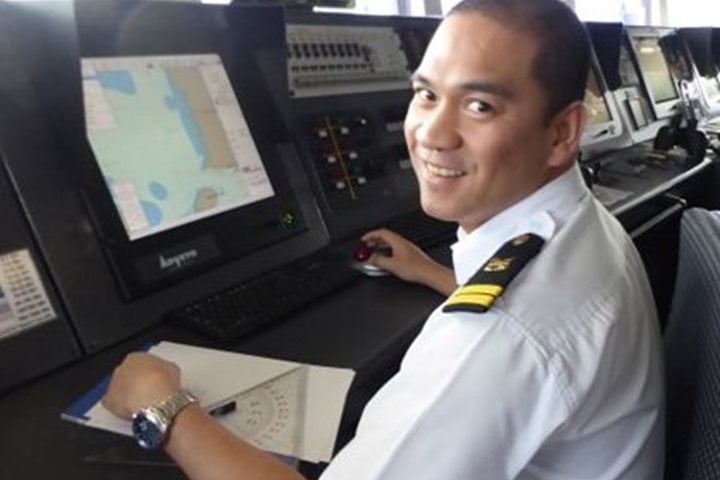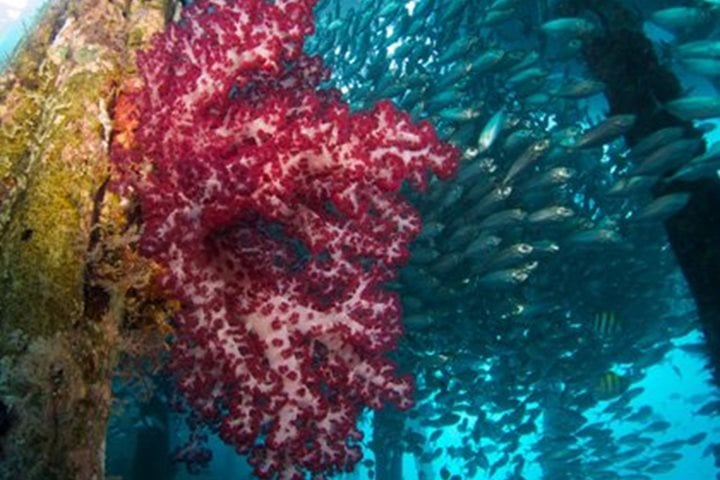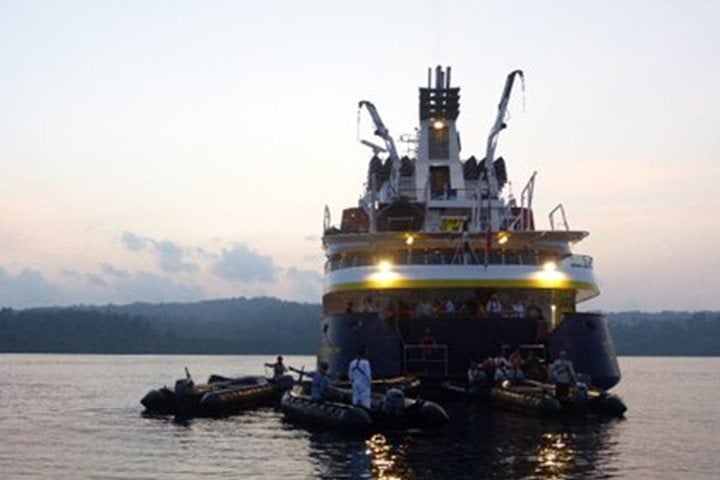Early this morning, during breakfast, National Geographic Orion entered the very scenic Banda Caldera. We all were impressed with how lush the Banda Islands are, especially now, during the dry season. As we approached, the impressive volcano known as Banda Api was off our starboard side. We could see the lava run that resulted from an eruption in 1988. Two spectacular kora-koras, the Bandanese versions of dragon boats, escorted us into our berth at the town harbor of Banda Neira. According to the local guides, the town has a population of 6,000 to 7,000 people and the entire archipelago has 20,000 inhabitants.
We spent the morning exploring Banda Neira. After an official welcome, we spent the rest of the morning exploring the very photogenic colonial township. This community must have been very resplendent in centuries past, but today many of the beautiful buildings are in disrepair. The locals didn’t seem to have had much desire to maintain these buildings that held such bad memories of the oppressive regime that once controlled the lucrative spice trade in nutmeg and mace, which was centered on these Banda Islands.
We split up into six groups, led by local guides, and proceeded to walk through the town market, where we encountered plenty of nutmeg, mace, clove and cinnamon for sale, as well as fruits, fish, and other sundry objects of interest, such as Chinese porcelains, Dutch East Indies coins, jewelry, antique weapons, tools associated with the spice trade, etc. This gave us plenty of opportunities for imaginative photography as we visited the old Dutch Protestant Church, the Government House, Fort Belgica high on the hill overlooking the harbor, and the Banda Historical Museum.
For many of us, however, the highlight of the guided tour was walking into a nutmeg grove and seeing the attractive trees loaded with nutmeg fruits ready for picking, as well as fruits and mace and nuts that had already been already harvested. We had to keep reminding ourselves that this tiny group of islands are the mystical “Spice Islands” that provided much of the impetus for the Age of Exploration, which began in the late 15th century. Portuguese, Spanish, Dutch, British and French explorers all tried to establish trade partnerships with the producers of spices here in the East Indies. Black pepper, ginger, cardamom, cinnamon and saffron came from southern Asia, but the most valuable spices of all at that time were nutmeg and clove—and both were found only on tiny islands here in the Moluccas (now called Maluku).
The nutmeg tree (Myristica fragrans) evolved right here in Banda and was found nowhere else in the world. Eventually, in the middle 17th century, the Dutch East Indies Company (also known as VOC), with its mercenary armed forces, managed to dominate the production and trade in nutmeg and mace for nearly two centuries. Walking about the town and seeing the nutmeg groves can actually send shivers up one’s spine as one thinks about the events that occurred here in Banda during the 17th, 18th and early 19th centuries. The attempts to control this local spice trade led to international maneuvering, political intrigue, treachery, murder, warfare and vast fortunes being made and lost over several centuries. All this makes Banda a spectacularly important place in the history of the world. Just imagine that! This is almost inconceivable to us today, but consider the fact that before the age of refrigeration, meats and other perishable foods had to be dried or salted or pickled or smoked, and spices were necessary to make these foods palatable and safe to ingest. Nutmeg, at that time, was the most valuable spice of all. The profit made from buying nutmeg (and mace) here in Banda and selling it in Amsterdam was reported to be 30,000%, or 300 times the purchase price. It’s no wonder all the trouble ensued over control of this market. It is also important to point out that the anti-microbial aspects of spices also gave them important medicinal qualities, and one must remember some spices, especially cloves, were valuable items in various Christian religious rituals.
The afternoon was devoted to water activities located at the outside edge of the Banda Caldera, near the site of the 1988 eruption of Banda Api. SCUBA divers, snorkelers and glass-bottom Zodiac partakers all enjoyed clear water, beautiful corals, exposed basaltic boulders, and vast numbers of fish (especially red-toothed triggerfish and pyramid butterflyfish) swimming along the very steep slope of the impressive drop off. It is interesting to note that the dominant corals here, as well as some of the fishes, were quite different from what we encountered in the Lesser Sunda Islands.







